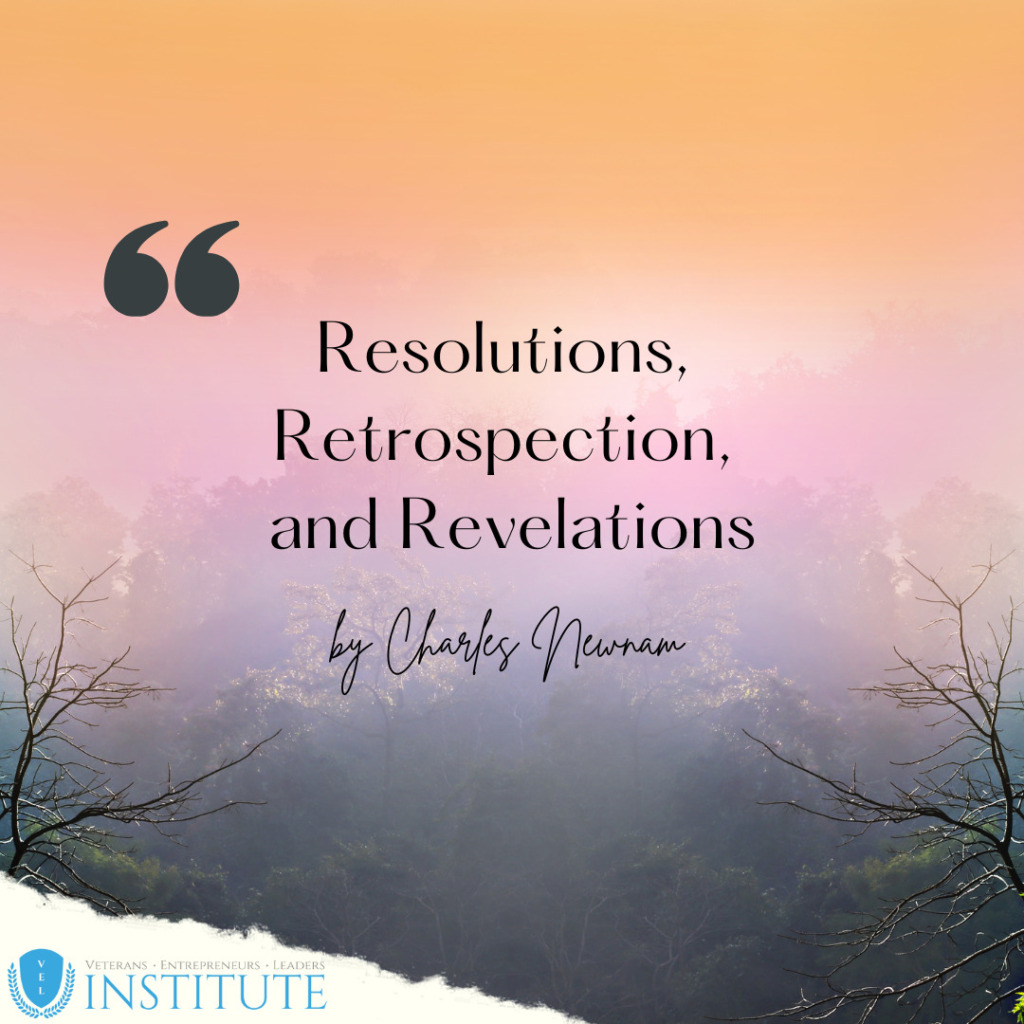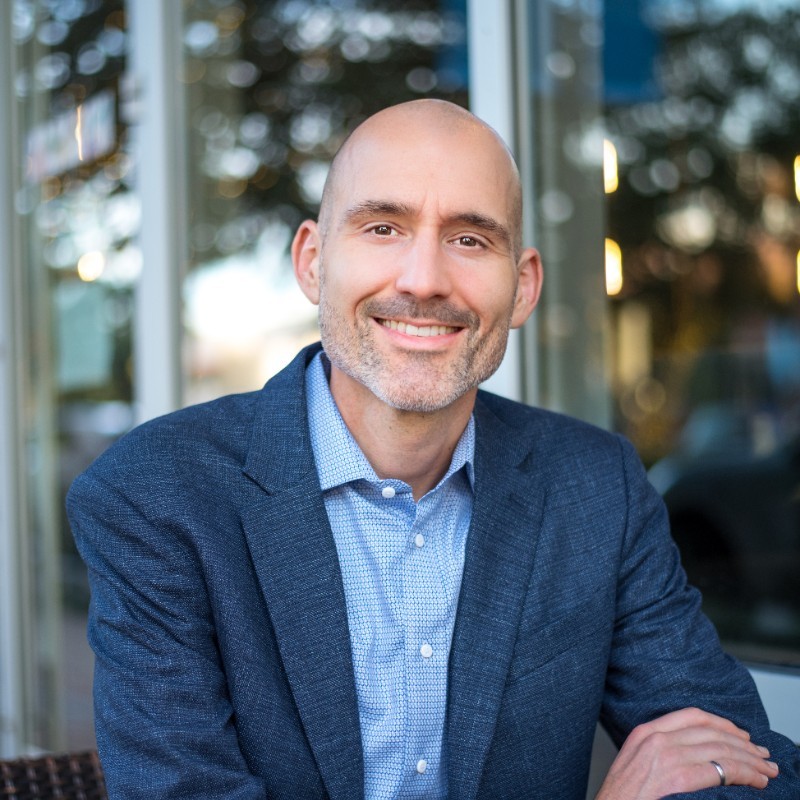
Happy New Year! It’s been 30 days since the ball dropped in NYC and I wonder what else might have been dropped already in 2023. It seems many don’t make New Year’s resolutions anymore.
Counterculture has become the culture these days. I remember not too long ago how some people would provocatively exclaim things like “this year’s resolution is no resolutions”, “January 1st is just another day, make resolutions whenever”, or “resolutions don’t work you need a new habit”. Now statements like that are pretty much the norm. But, you know what? We’re still not doing that great as a society as evidenced by Accenture’s Life Trends 2023: Control and Power. The report says the “permacrisis” we’re in is putting a lot of pressure on people to adapt. First, we cope with the perturbation (e.g., crisis) by using fight, flight, freeze, or focus and then we attempt to adapt. This comes at a huge cognitive cost. According to Mental Health America about 1 in 5 Adults in the US are experiencing a mental illness, 15% of adults had a substance disorder in the last year, and about 12 million adults are having serious thoughts of suicide. I say all this to illustrate there are many good reasons to make resolutions and try to change and adapt. This applies not only to you but also to your teams and organizations.
When I hear resolutions, I think behavior change and in the words of Doc Holliday “I’m your huckleberry, that’s just my game”. What’s a resolution anyways? Well, it’s quite the word. You can easily find a dozen or more definitions for this word. It comes from the Latin word resolvere, “to loosen, undo, or settle” or resolutionem “process of reducing things into simpler forms”.
Below I share with you three observations of why we fail to loosen ourselves and organizations from old habits and why we fail to break things down into simpler forms. These actions could be just what we need in a time when adaptation, resilience, meaning, and love are so needed.
Number One: What got us here will get us there!
Imagine the rally cry of your next town-hall or leadership team meeting. Perhaps you can picture in your mind’s eye the next hero politician. They stand up and boldly declare “We’re facing a difficult road ahead. We’ve got to stay the same! And I believe what got us here will take us there into the future!”
In some ways, you might say “well yeah Charles – I’m pretty awesome at some things as a leader or my organization does XYZ really well” Is the thing that you’re awesome at still serving you, serving your team’s, or your organization’s goals well? If so, keep it! What I’m poking fun at a little is the common statement “what got us here won’t get us there”. We then roll out large change management programs, new technology, latest org design, or make serious commitments to ourselves about personal behavior change (e.g., exercise more, sleep more, spend less, be kinder, etc.) After the fanfare, cool posters, new running shoes, etc., we go right back to the old ways of doing things. We often do this unconsciously, but I mean “hey! what got us here isn’t completely off the rails yet for most of us”. I think intrinsically we know we’re doing this but most of us must ride the current situation over the cliff before we get serious about behavior change. The bad news is you don’t really know what’s over that cliff until you go over it and that can land you in a crippling place.
So, then what old mindset, habit, or belief served you well in the past but is preventing you from moving to where you want to go now?
Number Two: Fresh lipstick same swine
What are these unconscious magnets that slowly pull us back to our old behaviors without our awareness? These forces seduce us back into the old version of who we were. How comfortable the warmth of the sun must have felt to Icarus as its heat and beauty beckoned him to come closer. This process of falling back to old patterns is almost always frustrating and elusive. Sometimes we don’t even realize we’re doing it until much time has passed. It’s fundamentally two things I believe:
Environment (aka systems): Kurt Lewin, the creator of organizational psychology, came up with the formula B=f(P,E) where ‘B’ is Behavior, ‘P’ represents the Person: history, personality, motivation, etc., and ‘E’ is the environment. We all live out our lives in multi-layered “environments” or systems that overlap and interact with one another. Just think about how much the systems have blurred between home life and work life. Another way to think of this is we all belong to different groups and those groups have different social systems associated with them. The point here is that all the environments, systems, and experiences that make up your world have produced largely the behavior you have today. I tell leaders of organizations all the time “the system you have created called your organization is perfectly designed to produce the results you have today”. You must change the entirety of the environment, not just the landing page on a website or the posters in the breakrooms. Behavior is a drifting boat on the currents of all our systems. You can change direction a little with sheer force but the real power in behavior change comes from changing the currents on which you float.
Complexes: “Everyone knows nowadays that people have complexes. What is not so well known, though far more important theoretically, is that complexes can have us” – C.G. Jung. It’s common in our lexicon to say someone has a complex. We might say they have a “mother complex”, “inferiority complex”, “authority complex”, etc. I have some bad news for you though. We all have complexes. You may be reading this right now thinking “whatever! I don’t have any complexes”. If you are taking a critical look within and coming to that conclusion, I can almost guarantee your life is being run by one. According to the American Psychology Association, a complex is “a group or system of related ideas or impulses that have a common emotional tone and exert a strong but usually unconscious influence on the individual’s attitudes and behavior”. So, what kind of complexes have you or have your organization, and how are your people playing that out through behavior? Undoubtedly your organization, team, or group of friends, look for people and attract people with a certain “fit”. I wonder sometimes if it’s just our complexes pulling us together.
You’re probably saying “okay Charles, I get it, things outside of me and some things inside of me affect the way I show up and behave – so what?” Well, here’s the thing: we keep finding ourselves stuck in these loops in life with the illusion that we have free will. We keep going back to the same anesthetics, roles, relationships, foods, etc. but it looks a little different each time. We fool ourselves into thinking this, “fill in the blank”, really is different this time. However, it’s the same energy directing our organizations or personal life just in a different container. What’s controlling your organization’s culture or your life but shows up in different forms?
Number Three: The question is the answer
I am making an assumption that anyone reading this is able to change. I’m assuming that you have the mental capacity and resources to change and be resolved to do something different. The question I have is do you know the purpose behind your desire to change? I mean do you really know why? The first “why” or second “whys” are usually pretty surface-level. When you start getting into the fourth and fifth “why”, now you’re starting to work with some good material.
Suppose your leadership team wants to be more collaborative, successful, transformational, etc. in 2023 – why? Who cares? So what?
Suppose you want to eat healthier, drink less, love more, more work/life balance, etc. this year? – why? Who cares? So what?
The struggle is weatherable if you know your purpose. Have no doubt the pain will be just the same but the suffering is nonexistent. In fact, the struggle and discomfort start to be enjoyable as you equate it with progress toward your “Why”.
What’s the BIG Why or the BIG Question? Well, traveler… You are the question and the way you live your life is the answer. Finding your Question ensures that when you get to the end of the answer you don’t find yourself having answered someone else’s question, but your own.
If you are curious about getting started or learning more about you, you can do a few things:
- Get into a dialog with yourself and ask scary questions. Take some time to sit down and do a retrospective of your life to this point. If your aspirational future looks wildly off from the trajectory you’re on, you’ll start to see some things that need to change. Journaling everyday is a great way to illuminate some of these things too – just write non-stop for 20 minutes. Write down anything that moves the pen, even scribbles.
- Show me your bank account (budget) and your calendar (org activities) and I’ll tell you what you value most. Perhaps take a look at these places and ask yourself “What are (am) we (I) acting like is the most important thing to us (me)?
- Join an event at VEL Institute. There are many ways to get involved. If you want to do some deep personal work, the Discovering Parts Within course may be just what you need. VEL needs civilians and veterans to join. VEL’s secret sauce is the integration.
In summary, don’t drive your “good thing” over a cliff to force you to change, believe what’s outside and inside takes many forms yet drives the same old behaviors, and know your purpose. Only then will you loosen yourself from ties that bind you down, see the simplicity of what you’re meant to do, and stand resolved in your Power to change.
 About the author:
About the author:
Charles Newnam is management consultant executive specializing in leadership and culture, the chairman and co-founder of a thriving veteran focused non-profit, VEL Institute, and a former US Navy submarine officer. Charles holds a B.S. in Electrical Engineering, a Master of Business Administration from UNC’s Kenan-Flagler Business School and a Master of Arts in Organizational Psychology from Columbia University. Charles enjoys exploring his own physical and mental limits through endurance sports. He continues to travel his own path while continuing a love filled life of service to others.

Leave A Comment